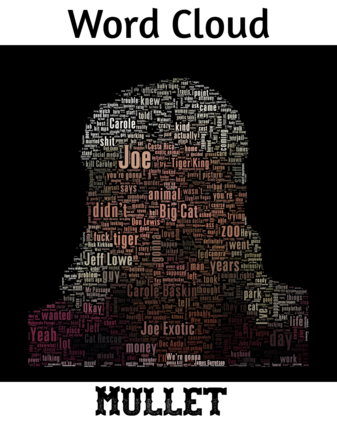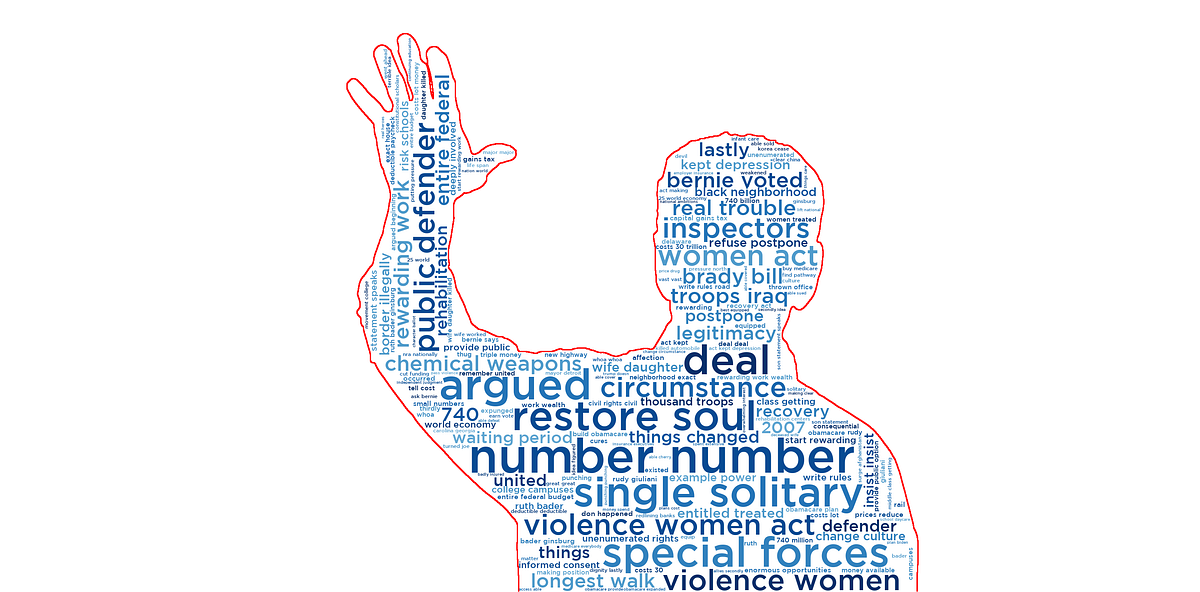I’m sure you’ve seen a word cloud. Generally, it’s a photo filled with words where the size depends on the frequency of times the word appears in the text you’d like to analyze. I wasn’t privy to this, but apparently, there has been/is (not sure) some pretty strong feelings against/for word clouds. I have read that they are bad, lame, equating them to a modern pie chart and even comparing them as the new mullet. Ouch. A mullet? Come on.

Illustration by Bryan Dickinson
I’ve also read some ways to improve word clouds and useful times to use them. Regardless of which camp you are in, I found that leveraging a compelling graphic or visualization in a presentation, engages your audience, prompts a reaction, can start a conversation, can be influential, and opens the door for more detailed analysis. A visually compelling word cloud art can draw readers in. With that said, I won’t get further into the pros and cons of word clouds, you check out the above links for that.
We will use a couple of different methods to extract some meaningful words out of the text. We will then generate some word clouds using the Python libraries WordCloud, pandas, and NumPy.
WordCloud is a word cloud generator in Python. You can install WordCloud by one of the following commands.
pip install wordcloud
conda install -c conda-forge wordcloud
Check out installation details here, and you can read through the WordCloud documentation here.
#word-cloud #python #data-visualization
